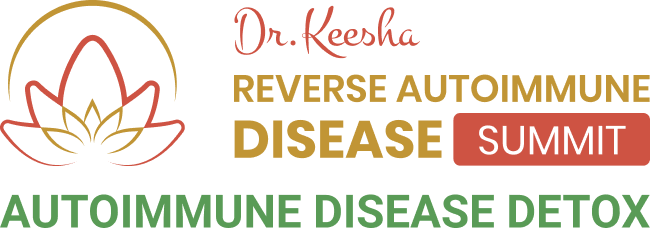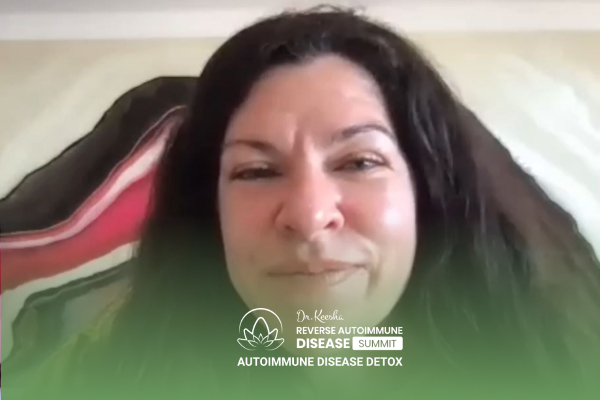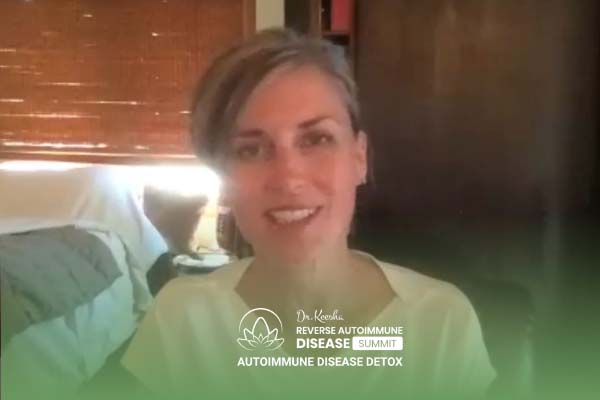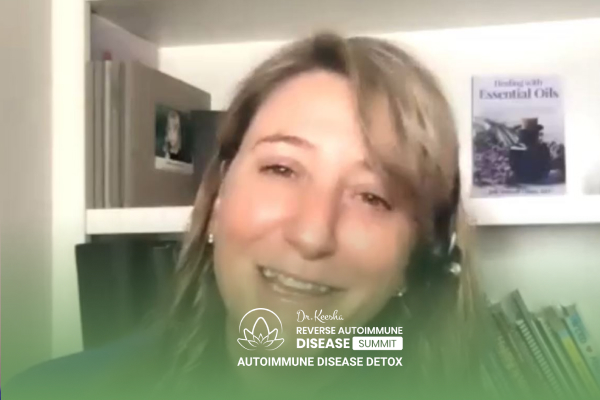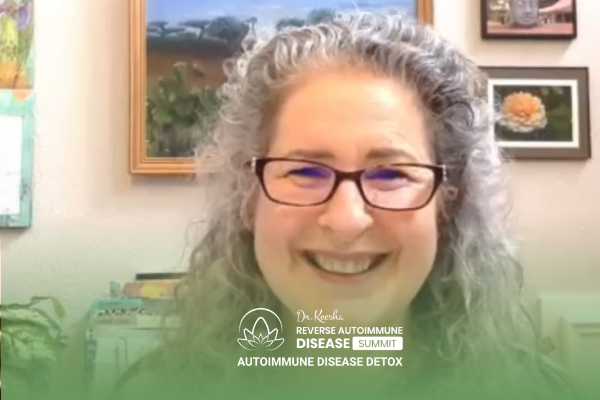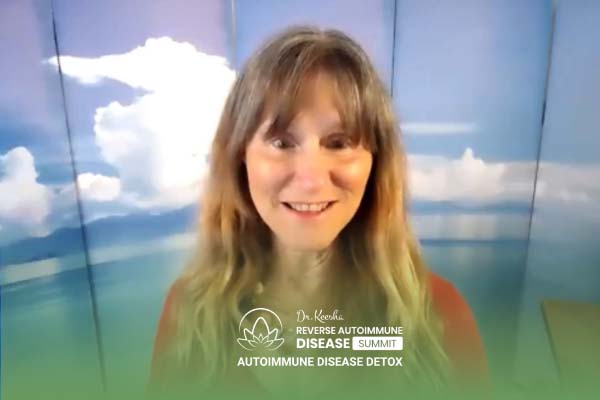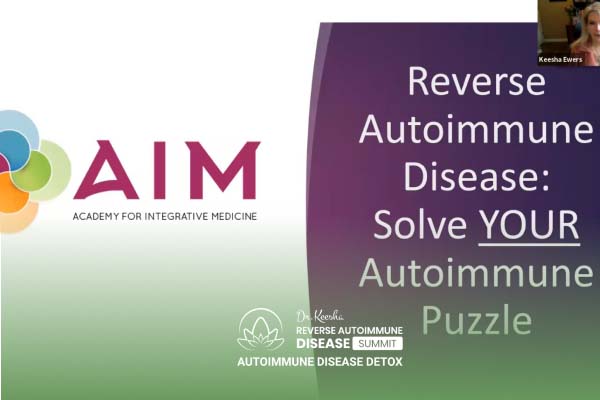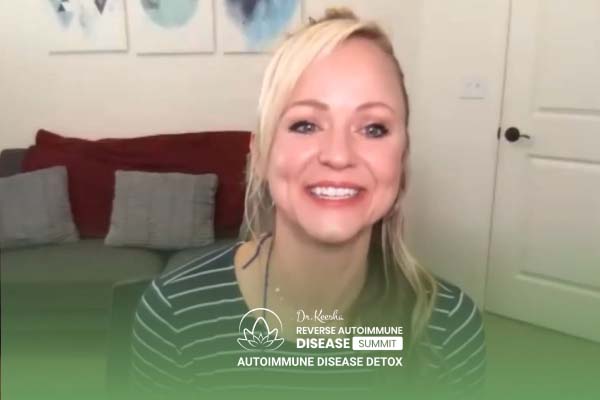Join the discussion below
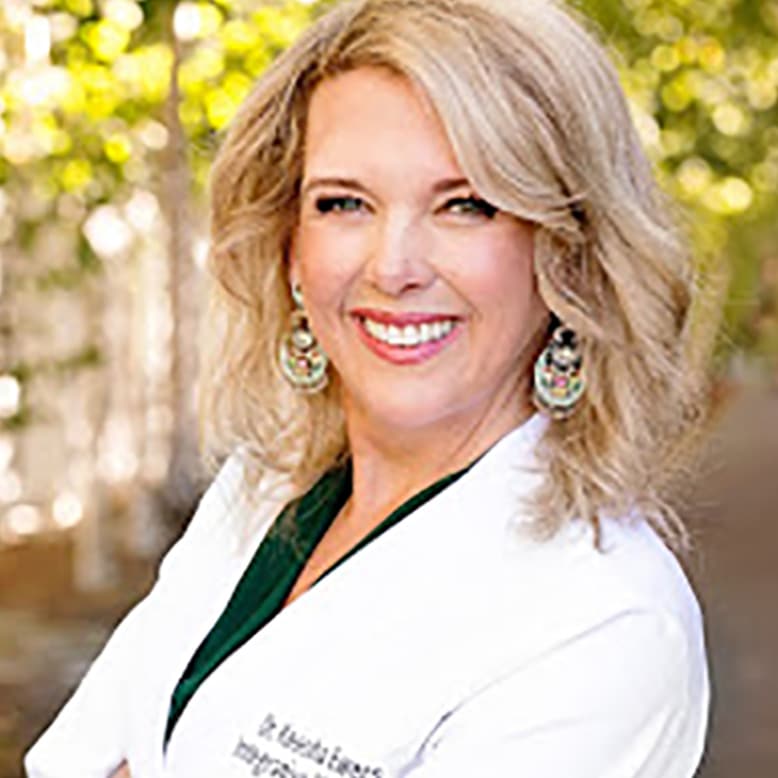
Keesha Ewers, PhD, ARNP-FNP-C, AAP, IFM-C
Dr. Keesha Ewers is an integrative medicine expert, Doctor of Sexology, Family Practice ARNP, Psychotherapist, herbalist, is board certified in functional medicine and Ayurvedic medicine, and is the founder and medical director of the Academy for Integrative Medicine Health Coach Certification Program. Dr. Keesha has been in the medical field... Read More
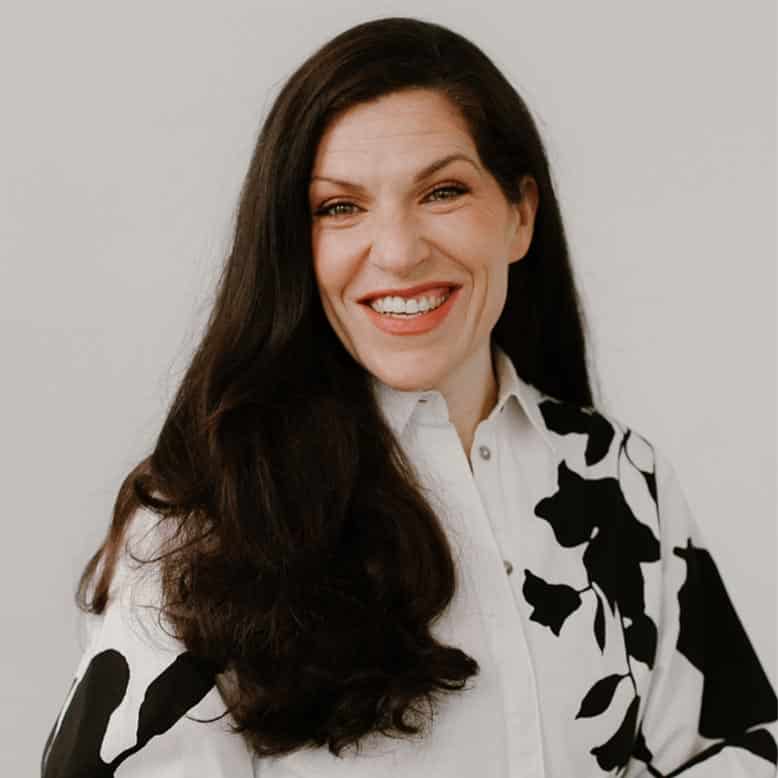
Dr. Christine Schaffner is a board-certified Naturopathic Doctor who has helped thousands of people recover from chronic or complex illnesses. Through online summits, her Spectrum of Health podcast, network of Immanence Health clinics, and renowned online programs, Dr. Schaffner goes beyond biological medicine, pulling from all systems of medicine and... Read More
• How do we accumulate heavy metals in our bodies
• What effect does heavy metal toxicity have on our health
• What are some tools we have to detoxify heavy metals and avoid retoxifying
Keesha Ewers, PhD, ARNP-FNP-C, AAP, IFM-C
Welcome back to the Reverse Autoimmune Disease Summit Series everybody. I’m Dr. Keesha and of course you’re joining me for the fourth iteration of the Reverse Autoimmune Disease Summit Series. This is the autoimmune detox and I am delighted to bring back a dear colleague and friend of mine, Christine, Dr. Christine Schaffner, who grew up in a family of healthcare practitioners and after graduating from Bastyr as a Board Certified Naturopathic Doctor she chose to make her ,ark in a powerful and unique way focusing on biological medicine, a sorely under explored modality that supports the patient’s own innate ability to heal rather than interrupting their physiology with medication and other prescriptive symptom-based protocols. With her widely diverse skillset, Dr. Schaffner combines both naturopathic, functional and conventional therapies to develop individualized treatment plans focusing on the underlying cause of complex chronic illnesses longer than this list but including Lyme disease, auto-immunity neurological illnesses and sleep issues. Welcome to this summit series again.
Christine Schaffner, N.D.
Thank you so much, thank you so much for having me Keesha.
Keesha Ewers, PhD, ARNP-FNP-C, AAP, IFM-C
So you know when we talk about auto-immune illness we’re not talking about one process in the body which it makes it very complex. And, when you start thinking about the complexity of, I think in Western medicine or conventional medicine the way that it’s often thought about is the target tissue, right? So if you have thyroid Hashimoto’s, right? Hashimoto thyroiditis, or then it’s a disease of the thyroid or rheumatoid arthritis or MS, right? We have, we tend to focus on the target tissue alone and what is, what else is there to think about when we’re talking about reversing autoimmunity?
Christine Schaffner, N.D.
That’s a great question and something that of course our patients teach us every day. And really what I have, my current framework for autoimmunity is of course all of the things that you just shared and all of the pathophysiology we have to understand when someone has this diagnosis but the natural path in me and the desire to look at the body as always trying to achieve a homeostasis and always trying to self regulate and heal but what is in the way? And what I found in modern illnesses and in the rise of these conditions like autoimmune illness, there are some very key factors which you know very well and you write in your book. There’s the factor of the environment and so looking at our environmental burden which I think is a huge source of underlying cause of why we see these chronic pathologies and when we think about environmental toxicants we think about heavy metals which are going to land on today but we also think about herbicides and pesticides.
We think about the whole super persistent organic pollutants that include plastics and Thallids and PCBs and all these things in our environment. And I also think electrosmog it’s in that category as well so it’s environmental burden. And then I also really see the role of the immune system and the role of how the what we would say our terrain or ecosystem becomes imbalanced. And again we are full of microbes, we have 380 trillion viruses in our virome, we’re more bacteria than human cells but it’s that balance of our immune system in harmony with these microbes and often when we have a chronic illness, that becomes imbalanced and we see these stump pathogens take hold and be an underlying driver of inflammation and autoimmunity often. And then of course you know this very well that but the role of trauma and unprocessed trauma, subconscious traumas, self-limiting beliefs and how that can really inform our physiology and just be as, just as much as an amalgam filling and unprocessed trauma can be a block into the self-regulating ability for the body. And so I look at all of that and how that interplays with my patients and that’s why it’s complex. I always say if it was one thing that would be way easier to get you better and so–
Keesha Ewers, PhD, ARNP-FNP-C, AAP, IFM-C
That’s right.
Christine Schaffner, N.D.
But it’s also when we can look at the body in this way there’s always so many opportunities for healing, so many opportunities for deeper wisdom and understanding our bodies as this vessel and barometer to experience life and so looking in partnership and curiosity rather than, especially in autoimmune world, right? It’s this really idea that the body’s betraying you, that it’s attacking you and it’s a really, it’s a really hard relationship to find a language around and so I think that the tools that we both use we try to reframe that and come from this deeper understanding
Keesha Ewers, PhD, ARNP-FNP-C, AAP, IFM-C
And it’s not a light switch. Like you’re either well or you’re not well. The painting that you have behind you have those layers, right? It’s layers that happen as you move into a new developmental state in your physicality, your energy body, your emotional body, your mental body, your spiritual self like all of those layers are all moving as you’re healing and so it’s not in a linear little straight line either.
Christine Schaffner, N.D.
Yeah, no, no. I often say, you have these little sayings, right? Health is resilience. Health is nonlinear, healing is non-linear. I learn that every day.
Keesha Ewers, PhD, ARNP-FNP-C, AAP, IFM-C
Yeah. So I know and, I think Malcolm Gladwell has a picture on the front of one of his books where, it’s point A to point B instead of it being in a straight line it’s like and then it finally gets there, right? And that’s how life has generally works. If you look outside mother nature has no straight lines it’s like, that’s how it goes, right? So let’s talk a little bit about what happens when we, like you said we’re landing on autoimmune detox is the name of this particular iteration the Reverse Autoimmune Disease Summit Series and I really wanted to talk to you about the role of metals and what heavy metals, what’s the role that that plays in illness and how it intersects? I always think about like gut pathogens in that, that diverse hopefully biome that we have in there viruses and fungi and parasites and bacteria, they’re all in there and they have to learn how to live together and the metals are sometimes like the shield that they use to stay in. And I think about like Vikings with their little shields, you know? And so metals do play a part in gut pathogens staying put, right? And some of the things that we see. So let’s talk a little bit about that and how we get heavy metals in our body and then what are the typical metals that can cause problems that we see.
Christine Schaffner, N.D.
Absolutely. And I think heavy metals are definitely an underlying cause for many of the pathologies that we see and, we’re all in this environmental supre mother earth and all of us are exposed to these things and some of us because of our own unique individuality have a better time eliminating these things more than others. And I think really to lead a healthy lifestyle not only to reverse autoimmunity but to really prevent any chronic condition from happening or just staying healthy we have to look at this really simple equation, is our body eliminating very well and in relationship to the environmental burden that we’re constantly being exposed to and when we get a diagnosis we often kind of think, “Oh, how did this happen to this happen overnight?”
But it happened over time where we bio-accumulate things like heavy metals and so this is an area that I often focus on with all of my patients, some more than others. And when we think about heavy metals we think about aluminum, arsenic, cadmium, lead and mercury are the common ones. There’s also radioactive elements that are more and more prevalent that I’m seeing in heavy metal tests but for the purposes of this conversation that we really even land on aluminum, lead and mercury and figuring out strategies to help support the body with that we do a lot ’cause, certain metals are in different groups that they and when we do detox strategies, we’re treating mercury but we also affect the other sulfur hydro affinitive metals like lead, arsenic cadmium and so there’s a lot of detox strategies again that we can talk about today. And so, when we think of heavy metals they’re heavy.
So they’re metals that have a charge that can have an affinity for different tissues and so, we can talk about really a lot of different ways heavy metals can affect our bodies but for the purposes of thinking about autoimmunity, one of the things that we can think about as this foreign substance like heavy metal they often don’t have biological properties. I mean there’s certain heavy metals that are like iron and zinc that have physiological effects but we’re talking about the ones that tend to be very disruptive to our physiology and so really aluminum has no place in the body, right? Mercury is a neurotoxin, lead can be very disruptive to our bone health so when we think about all of these mechanisms I focus on neurotoxicity of course. And then when we think of autoimmunity especially the thyroid there’s a lot of prevalence especially in, if you have an autoimmune illness you might often have auto-antibodies to your thyroid.
And there is a link between mercury and autoantibodies in Hashimoto’s and so when you think about the mechanism we think of a term called molecular mimicry where there can be a foreign substance in an attempt that the body is trying to clear a pathogen or a toxic and it can make autoantibodies that look like our, ourself tissue. And it looks like we’re attacking ourselves but the body is really just trying to clean up toxic burden or get rid of a pathogen and so I think autoimmuning is getting there, there’s a lot more people having these conversations and looking at these drivers but it’s not just a random occurrence that the body just doesn’t wants to turn on the thyroid, right?
There’s something driving that and so, there’s so many things we can talk about so I’m trying to get my brain in one spot but, when we talked about the role of how we can really paint the picture that I really love talking about for a lot of my patients is looking at the terrain and what does that mean? So that means what we call the extracellular matrix. And this is an area that I love talking about and educating on ’cause this is where a lot of the action is for the intersection between toxicants, pathogens, also trauma in the space. And if it would be helpful for you I don’t wanna take us down a diatribe but I’m happy to kind of paint the picture of what the extracellular matrix is Keesha that would be helpful for your audience.
Keesha Ewers, PhD, ARNP-FNP-C, AAP, IFM-C
Do it, do it.
Christine Schaffner, N.D.
Don’t wanna go on this tangent.
Keesha Ewers, PhD, ARNP-FNP-C, AAP, IFM-C
No, the viewers that join the seminar series are so smart and so, they love education and so yes, do it.
Christine Schaffner, N.D.
Okay awesome. So when you were talking about these targets tissues, right? And so the extracellular matrix is this space in between our cells and so, when we think about it this space in between ourselves is not just this random kind of fluid filled space. It’s a very intelligent space that’s complex and so when we think about the structural space we have collagen which is the most abundant protein in the body. So we have things like collagen, we have things like what we call proteoglycans that are things like and sulfate. We have things like hyaluronic acid.
So it’s this fluid filled space in between our cells and a big part of how this fluid kind of gets bathed and gets drained that helps to bring oxygen and nutrition ourselves and then remove waste is through the lymphatics and so we have our circulatory system that brings oxygen rich blood through our capillaries and then on its way to exchange into the veins, fluid leaves that capillary space and some of that returns to the circulatory system but a lot of it leaves that space and sort of becomes what we call interstitial fluid. And that fluid can again bathe ourselves in this extra-cellular matrix with oxygen and nutrition, but because of our environmental burden it can bring with it toxicants like heavy metals. Again, heavy metals have often a positive charge.
They’re two plus, three plus and the extra cellular matrix these structural proteins that help with not only structure but communication and trapping toxicants have a negative charge and so there can be this electrical kind of pairing where heavy metals can get trapped and proteoglycans and collagen again, glyphosate can be hanging out in the space. This is where lime likes to hang out. And then as this fluid moves it drains into the lymphatic system and that’s why if you take away one thing today that I share supporting your lymphatic system is one of the best things that you can do to support your body’s ability to eliminate and detoxify. And so in this space, there’s a lot of our immune cells, their fibroblasts, their mass cells. I don’t know about you Keesha but I’ve seen such a rise in histamine issues–
Keesha Ewers, PhD, ARNP-FNP-C, AAP, IFM-C
Cell activation.
Christine Schaffner, N.D.
cell activation and when you kind of think about it in the layer of oh my gosh, the mass cells are in this soup of, toxicants, trauma and pathogens and they’re getting more easily irritated to produce things like histamine and so, so again there are different mechanisms of why things can linger in there and then it’s just again very simple if we’re not taking out the garbage, if our, the space becomes full of toxicants not moving, gets sluggish then we are set up that our cells aren’t as healthy because these things can get trapped in our cell membranes or cells won’t remove waste as easily.
There’s something called the cell danger response that you know very well that can start telling the cells that they’re threatened and getting into this mode where, energy is conserved and our immune system becomes impaired even further. And so, so yeah I feel like this extracellular matrix space and so again I mentioned toxicants and then pathogens like Lyme and viruses, and then there’s water. A lot of our body is water of course and so this interstitial fluid in my opinion and where people like Dr. Cowan are educating us is that a lot of this fluid is in this exclusion zone state and so the exclusion zone water is structured water. And
Keesha Ewers, PhD, ARNP-FNP-C, AAP, IFM-C
A guest on this summit too Dr. Gerald Pollack so–
Christine Schaffner, N.D.
Yeah, yeah.
Keesha Ewers, PhD, ARNP-FNP-C, AAP, IFM-C
We were talking about easy–
Christine Schaffner, N.D.
Awesome.
Keesha Ewers, PhD, ARNP-FNP-C, AAP, IFM-C
Easy water and–
Christine Schaffner, N.D.
Yeah, I love Jerry and he’s a friend–
Keesha Ewers, PhD, ARNP-FNP-C, AAP, IFM-C
Me too. Same here.
Christine Schaffner, N.D.
Yeah no, I just love work and he, I was interviewing him for something and I was like, “I think Jerry it’s just like health is exclusions on water,” he’s like, “Of course I think that.” You know but, it’s just more–
Keesha Ewers, PhD, ARNP-FNP-C, AAP, IFM-C
What I’ve been trying to tell everybody.
Christine Schaffner, N.D.
I know, I know but I’m like, I get it, I get it. Because you know all the fluids in the body, right? And that the more structured water we have in the body, yes, it can carry energy but it’s exclusions on water, right? So it excludes and moves toxicants out of that gel-like energy producing, structured water and so–
Keesha Ewers, PhD, ARNP-FNP-C, AAP, IFM-C
And just for a little pause right there about this, this doesn’t mean that you stay on a shrinking iceberg of food choices.
Christine Schaffner, N.D.
Yes.
Keesha Ewers, PhD, ARNP-FNP-C, AAP, IFM-C
That’s not your road to health–
Christine Schaffner, N.D.
No
Keesha Ewers, PhD, ARNP-FNP-C, AAP, IFM-C
To eventually have your iceberg float melt and you’re drowning which is how most of our patients feel when they’re in that muscle activation and histamine response. It isn’t about taking away, taking away, taking away as a way of managing your flare, it’s about doing what we’re talking about achieving that health in that extracellular matrix, that making sure that this exclusion zone is nice and healthy.
Christine Schaffner, N.D.
Yeah. I’m really appreciating you saying that ’cause of course I’m a naturopath and I of course I, see the power of diet and food,
Keesha Ewers, PhD, ARNP-FNP-C, AAP, IFM-C
Yeah.
Christine Schaffner, N.D.
All of that but I think there’s a mindset right in the alternative space is just avoid and restrict and the psychological impact of all of that restriction is so hard and also I think it’s not getting to the root of the problem, I do think that it’s a symptom of, why is the immune system so flare that you’re reacting to anything you put it in, right? So–
Keesha Ewers, PhD, ARNP-FNP-C, AAP, IFM-C
And for a while we have to stop reading, putting the red cloth in front of the charging bowl for sure, right? But eventually you wanna get out of the bullpen.
Christine Schaffner, N.D.
Absolutely, absolutely. So we have the space, I’d give you a little very long-winded answer but when you kind of think about that space and the health of that space that’s really the key to supporting your health and really helping to quiet down any hyper inflammation or autoimmunity. The more that we can get that space draining and those support the removal of toxicants, removal of supporting the and assisting the body to decrease the load of pathogens that could be disrupting that space. And then also where I was also going with the structured water, there’s a biophysicist who passed away, her name is Mae-Wan Ho and she talked about, she was the one who thinks acupuncture meridians are really collagen and the collagen is this not only structural protein but it’s this fiber optic network in the body and this electric conductor and we move light and electricity through collagen.
But around collagen is the structured water and structured water can only hold energy but it can hold information and she kind of makes the leap of and she does this in a very brilliant way about how this is where consciousness can be stored in the body and many body workers out there any patient who might be listening you might be laying on a table with someone doing craniosacral work or myofascial release or trigger or whatever. And you don’t have a memory or a thought it’s more of a body awareness and a letting go or a visceral kind of response where something kind of just floods out of you that you just weren’t aware of and that to me is, there’s fascial memory there’s fascia, the body holds the memory.
Not only of course in all the ways but also I think a big part of it is in this extra cellular matrix in this fascia. And that’s why when you become healthier and you address these things, as you remove toxicants and get those kind of out of all of these structural proteins and getting the body to communicate better and as you address pathogens, you’re moving fluids and you can be moving emotions as well and so that’s why we see these things where people have these detox reactions they can feel really emotional, right? They can have these kind of swings and memories and letting go and I see all sorts of things but it’s this movement of the space where you can be addressing all of these things and so, so yeah, I see this highly interconnected and, I think the fascia, the extracellular matrix is a really important lens to think about how we can heal our body.
Keesha Ewers, PhD, ARNP-FNP-C, AAP, IFM-C
Beautiful. So the role of metals and all that.
Christine Schaffner, N.D.
I went on a tangent, you know?
Keesha Ewers, PhD, ARNP-FNP-C, AAP, IFM-C
Yeah, but I wanna, so I want everyone to kind of like that’s the field that Dr. Schaffner just sort of like illustrated and put all the landmarks in it, right? And now let’s introduce heavy metals into them, into that field, right? Collagen, lymph are our structures of our water or whatever. It’s ionic charges whatever it’s, structured water actually has a whole different molecular formula to it than H2O. So we, what we’re doing with heavy metals in that soup, I always call it the hot tub, right? So what is in your hot tub that they, your cells are bathing in? If your cells are bathing in resentment, that’s like the most toxic chemical on the planet and we make it from in here, but then then we also have some things in the environment that come in that go into that hot tub too that are bathing yourselves, right?
Christine Schaffner, N.D.
Yeah absolutely and so again, aluminum, mercury, lead can have an affinity for these structural proteins and then, I really look a lot at neurotoxicity and so how are these metals affecting our central nervous system or peripheral nervous system? Neurotoxins are essentially they can get lodged in neurons or they could be transported along neurons back into the central nervous system. So again, I’m sure you’ve done a ton of education around the mouth. One source of mercury is often amalgam fillings. Amalgam fillings are primarily typically over 50% mercury which is a known neurotoxin that mercury vapor gets released over time and gets into the nerves and there’s something called a retrograde axonal transport where the mercury travels back from the nerves in the mouth to the cranial nerves, to, into the brain and then once mercury’s in the brain it can be very disruptive to what we call our astrocytes.
The astrocytes can bio accumulate mercury and when they bioaccumulate light mercury, mercury binds to different parts of the cell disrupting it’s physiology and function and unfortunately, sometimes leading to cell death. And when we have neurodegeneration or cells dying in the central nervous system that’s gonna impair communication, that’s gonna impair function, that’s gonna impair waste clearance out of the body ’cause of or out of the brain rather because of that’s a big job of astrocytes. Again, I’m a big believer and you know how we can heal the brain and create new connections and stimulate BDNF and neuroplasticity so it’s not unsolvable but we have to know what we’re up against and so, mercury can get lodged in the brain. Again, aluminum is a really another focus of mine.
We have so many sources in our world of aluminum exposure and aluminum is a known neurotoxin as well and it can also inflame the blood vessels. So again when we think of that circulatory system that carries our blood is interconnected to the lymph. If there’s a lot of inflammation in our circulatory system and also the blood vessels in the brain that can of course disrupt oxygen transport. And then when we look at aluminum as well, aluminum has been shown to be in higher amounts in neurological illnesses in the brains of post-mortem patients with Alzheimer’s or even children with autism and so these, we get exposed to these things, again, aluminum and mercury I’m just highlighting and through different routes of exposure a lot of them have an affinity for our brain and our central nervous system and our peripheral nerves and then can create symptoms that are associated with a lot of autoimmune illnesses from insomnia to brain fog, depression, anxiety, pain in the body.
A lot of burning pain in the body can be related to heavy metals. So then we have to think about okay, how do we address this and how do we get these things out? And so I mentioned aluminum, mercury specifically because aluminum has a set of things to detox and then mercury does as well and then mercury is in the group of what we call sulfur hydro affinity metals, metals that have a binding affinity to sulfur. And so that could mean mercury, lead, arsenic, cadmium and so if we’re kind of addressing that of course there’s gonna be nuances within that where we’re looking at those two big groups of metals that I find to be very, very problematic in a lot of my patients. And so, again there are other mechanisms I can go through and how heavy metals disruptor physiology but when we think about, the extracellular matrix, we think about the brain, of course the gut as well, metals can be ingested, affect factor microbiome, make things like candida thrive in our gut and overgrow and affect the permeability. And then again it’s also Keesha, it’s not like aluminum or mercury are traveling alone it’s all that other environmental burden that we talked about–
Keesha Ewers, PhD, ARNP-FNP-C, AAP, IFM-C
Right.
Christine Schaffner, N.D.
Is being ingested and those have those, we don’t study that as much as you know, Dr. Busono one of the mentors there last year he often says one plus one doesn’t equal two anymore and that is very what we’re finding so yes aluminum, yes mercury, but throw glyphosate on there, right? And then the membranes and the gut even becoming more leaky and then the absorption of aluminum becoming even more in the body so it’s just that understanding.
Keesha Ewers, PhD, ARNP-FNP-C, AAP, IFM-C
I always say it always travels in packs.
Christine Schaffner, N.D.
Yeah.
Keesha Ewers, PhD, ARNP-FNP-C, AAP, IFM-C
Yeah. It’s like I say, I always say, this is the grossest analogy, I need to come up with a different one but, I used to live in QS, Florida and when you see one cockroach, you know that there are a million.
Christine Schaffner, N.D.
Yes, yes, yes, yes.
Keesha Ewers, PhD, ARNP-FNP-C, AAP, IFM-C
It’s like oh no.
Christine Schaffner, N.D.
Yeah, totally.
Keesha Ewers, PhD, ARNP-FNP-C, AAP, IFM-C
Right? So you never assume yeah, that there’s just one thing, it’s all in this grouping like you just said they travel and have an affinity. So a couple of places we haven’t mentioned that I think is really relevant to what women see because of course autoimmune 80% of illnesses are diagnosed in women is as they’re going into post 40, bones are starting to resorb and there’s often some heavy metals I call it the cold storage in the bone that will start to release. And then when women that have had a lot of extra adipose tissue or body fat on them start to lose it rapidly, that’s another storage place and these will get released out into the system in a very uncontrolled way and can cause some of these problems that we’ve been talking about.
So I know like when I’m curating heavy metals I always send my patients in for a DEXA scan. I’m like let’s check your bones and see if that’s one of the places that it’s coming from. Are you osteopenic right now and that’s why we’re seeing this big spike in mercury even though 10 years ago you had all your amalgams removed, did a really good cleanse, you came up negative and now all of a sudden you’re having these spikes? So, that’s one of the things that I kind of wanna point to ’cause our listeners may have done some heavy metal work before but then this whole aging process is also releasing stuff out of storage, right?
Christine Schaffner, N.D.
Yeah, no I am so glad that you brought that up and I often mention that and see that as well and, a couple points to that is that, heavy metal detoxification I’ve always been very humbled by, some people come to my office and go, “Oh, I’ve done that before,” and I’m like five IVs which is great but like that’s just kind of the tip of the iceberg and as you said the complexity is that metals get stored in different tissues, right? So I mentioned the matrix, the gut, the brain but yes the bones are a huge source of lead and there’s also research on cadmium as well with bone health and it can get stored in the bone and then it can also affect our kidneys and then that’s really critical to bone metabolism and so there’s a couple of different modes of action but as our hormones decline and that we can break down bone we can then be releasing these metals and I see that often where people think of like, where’s this coming from? Or they feel like oh, they’re going through menopause or those shifts in hormones and they have either neurological symptoms or heavy medical related symptoms–
Keesha Ewers, PhD, ARNP-FNP-C, AAP, IFM-C
Or memory loss that’s not just related to progesterone. It’s so severe and they’re worried they have Alzheimer’s, I’m seeing a lot of that.
Christine Schaffner, N.D.
Yes, yes. And so, that’s a really good phase of life to be aware of and to just really go in with eyes open and just know that, we’ll be getting to deeper storage depots and toxicants going through those phases of life. And so yeah, so definitely bone health I think is really important and again looking at lead and cadmium and as you said other metals as well and then, fat for sure. I see that there’s always a couple of those patients who went through a kind of a detox or cleanse or lost a lot of weight and then they had neurological symptoms after that and that can be that release of store what are in those fat cells, right? Metals and and plastics and if you’re not using detox strategies to help bind what’s thank goodness being eliminated you can feel worse in that process. I’ve seen that for sure.
Keesha Ewers, PhD, ARNP-FNP-C, AAP, IFM-C
Yeah, I had a lot of people that would wash up on the shores, my shores from HCG diets, right?
Christine Schaffner, N.D.
Yeah, yeah.
Keesha Ewers, PhD, ARNP-FNP-C, AAP, IFM-C
And not only were their thyroids blown but they also had tremendous levels of circulating heavy metals that I was starting to discover and it’s like oh my gosh. And it was this rapid decrease, right? In fat tissue and so, yeah, that can cause some of this. And I remember the first detox I went through I didn’t know anything. I had been diagnosed with rheumatoid arthritis. I was 30, maybe one or two and had gotten a hold of a book on detoxification and I was just learning and just went straight into it and oh my gosh, was I crabby? And you know I mean, just crabby, I couldn’t sleep, I felt like my memory, I just felt like I could control my emotions and when I look back at that, I’m just like, Oh sweetheart you just didn’t know very much there, did you?
Christine Schaffner, N.D.
experiment, right?
Keesha Ewers, PhD, ARNP-FNP-C, AAP, IFM-C
Oh my gosh.
Christine Schaffner, N.D.
That you had to feel, yeah.
Keesha Ewers, PhD, ARNP-FNP-C, AAP, IFM-C
Yeah and just not understanding that your adrenals need to be stable, your hormones, it like the, your organs of detoxification before you go in with all guns ablazing and I think a lot of practitioners, it’s why I wanted you to come and talk about this because I know that you’re very respectful of the body and you know, someone will hear a talk like this and go, “Oh my gosh, I need to go do a provoked heavy metal urine test,” and then, oh no, I have all of this stuff showing up I need to go get it done and I’m gonna go sit in the recliner and have whole bunch of IVs. And there’s never that inquiry to the body that says, okay, like we’re gonna do this together, are you ready? And checking the data to make sure that everything’s in place, that the body can actually manage releasing what we’re stirring up, right? That the adrenals are okay. This is hard work for the body to do this. Right?
Christine Schaffner, N.D.
Yeah, no absolutely and I’m so glad you put that, you say that, stated that because that’s, it can be one of the best things for someone’s health and when it’s done in properly we can make people feel worse or they could potentially get into secondary consequences that are so preventable and so I, when we think about supporting people with that heavy metal detoxification strategy or any detoxification strategy, I already mentioned the lymphatic system and that’s really kind of a foundational system that I like to support and so lymph therapies help to drain that extra cellular matrix and then the lymphocyte kind of a waste clearance and then also an immune surveillance system and so getting the lymph moving can be a really important highway of elimination that we wanna have in addition to supporting our organs of elimination, having good bowel movements, being hydrated, supporting the liver, the lungs, the skin, these are things that we wanna support and have on as our foundation before we do any more aggressive or targeted therapy.
And of course minerals play a huge role in heavy metal detoxification and so when we, it’s like the chicken and the egg, heavy metals can displace minerals and, we live in a very, our soil unfortunately is very depleted and a lot of us are mineral deficient especially if you’ve been going through prolonged stress and have a chronic illness so repleting minerals are, can that alone can start helping the body detoxify so I think about laying foundation. I find that I’m often broken record with my patients, talking about limb strategies and then also supporting bile flow especially for women.
I think bile is such a route of elimination that’s not only really great for digesting fats but it also helps us eliminate metabolic waste and hormones but also mycotoxins, metals and many of us can have sluggish bile and have congested gallbladders and if you’re in that boat, you wanna really get bile flowing and optimized before asking the liver to do more work and get more toxicants out. And then that bile also has so many roles in the body so it helps with digestion, elimination, it also sets the terrain of the small intestine and the large intestine for a healthy microbiome, it’s important in thyroid conversion so bile can be really supportive and just doing things like a castor oil packs to having bitters in either your foods or in your supplement protocols. There’s a lot of ways to support phase one and two and 2.5 and three detoxification in the liver and so those are things that I think about just to lay the foundation of having a metal strategy and of course binders, I often talk about them. Binders help to bind what’s being eliminated often in the bile and having that eliminated through the stool and so that’s a really important part of heavy metal detoxification too. And so–
Keesha Ewers, PhD, ARNP-FNP-C, AAP, IFM-C
Don’t take that with your thyroid medicine.
Christine Schaffner, N.D.
Yeah exactly. Totally. And those are gonna be things like–
Keesha Ewers, PhD, ARNP-FNP-C, AAP, IFM-C
Public service announcement, please don’t take any other supplements.
Christine Schaffner, N.D.
Yeah, I know I know, right. And those are things like thorella and zeolites and charcoals and clays and fulvic and humic acids and modified citrus pectin and things like that. But you always, always, always wanna have binders while you’re asking the body to release things so that you don’t, you can really ensure proper elimination out of the stool and so those things aren’t getting recirculated and reabsorbed and then the body has to try harder to get them out again and so that’s really important. Another public service announcement I think Keesha is if you still have amalgams, please don’t do anything aggressive to remove mercury. So do not do chelation until your amalgams are out because I often seen people be really aggravated by that. And again, that’s kinda step one. You wanna avoid exposure, remove like the known exposures that are obviously active in your body and then before progressing with a more strategic and targeted therapy
Keesha Ewers, PhD, ARNP-FNP-C, AAP, IFM-C
And make sure you’re getting amalgams removed from a good biologic dentist who knows how to do it properly.
Christine Schaffner, N.D.
Totally, I know, My heart always–
Keesha Ewers, PhD, ARNP-FNP-C, AAP, IFM-C
Interview them and–
Christine Schaffner, N.D.
Yeah. My heart always breaks when people do that and they get worse from it because it’s one of the things that can be so important for your health and when doing it right, people feel better, their brain gets clearer, they feel better, they tolerate treatment better. But if again, if you’re not using a biological dentist there’s a group I often recommend www.iaomt.org and they train dentists to remove mercury safely and so, yeah, you want someone to, who’s removing them is taking it as seriously as they know the toxicant is and so like they usually are suited up and using separate oxygen and doing IV and making sure that you’re protected and so there’s a lot of, I think working with a biological dentist and then either a functional practitioner, a naturopathic practitioner who really can support you so you’re ready and that can be one of the best things that you do for your health.
Keesha Ewers, PhD, ARNP-FNP-C, AAP, IFM-C
Yeah. And if you have any questions about what your mercury fillings are doing you can go to that smoking tooth video on YouTube.
Christine Schaffner, N.D.
Yeah, yeah.
Keesha Ewers, PhD, ARNP-FNP-C, AAP, IFM-C
That’s great.
Christine Schaffner, N.D.
Yeah, I know that really paints the picture, doesn’t it?
Keesha Ewers, PhD, ARNP-FNP-C, AAP, IFM-C
It really does. And it was just illustrative, takes you two minutes and you get to see, like it’s just sitting in there off gassing with nothing happening and then it shows what happens if you rub it with like grinding down your food, right? Chewing, what’s going to happen. Yeah, grinding your teeth at night, what’s going to happen so, yeah, it’s very, very illustrative. Is there something that in our last few minutes here that we haven’t touched on? Like this is a gigantic subject that you really want to make sure that we leave our audience with.
Christine Schaffner, N.D.
Yeah. You know so we talked a lot about different things and strategies so again, I really am a big believer that detoxification is really a lifestyle strategy so just be gentle with yourself and that it’s not gonna be, you’re gonna have this environmental burden of heavy metals that is going to come out in waves. So there’s gonna be times when you’re eliminating more than others and just knowing that you don’t just have this line on a heavy metal provocation test and, you go down the line and then you’re done and you know, these metals can come out in waves and that it’s a process, right? It’s not gonna happen in a month. It’s gonna be, a elimination process over time.
And again, I gave you a lot of tips around laying the foundation and then really depending on you know what kind of condition you’re up against, there can be a place for more targeted therapy like IV chelation or oral chelation strategies but those always have to be in the backdrop of, good support so they’re not aggravating you. And then I always love to use different nutritional supplements and different herbal compounds and also I use a lot of melatonin to help also push metals out of the brain. So there are a lot of, there’s so many tools and therapies that you can do to support whatever is gonna be your path. I can use lab tests. So you can look at blood if the labs are positive in the blood that’s a very high burden, you shouldn’t have metals–
Keesha Ewers, PhD, ARNP-FNP-C, AAP, IFM-C
Yeah, it does.
Christine Schaffner, N.D.
Your blood so if someone does a blood test and has high aluminum like you have a very high burden of aluminum and so that needs to be addressed
Keesha Ewers, PhD, ARNP-FNP-C, AAP, IFM-C
And more reason too.
Christine Schaffner, N.D.
Yeah.
Keesha Ewers, PhD, ARNP-FNP-C, AAP, IFM-C
It’s not stored at that point. so yeah
Christine Schaffner, N.D.
Yeah, exactly. And then there’s the urine provocation tests that a lot of functional doctors do or there’s hair mineral tests that can be very helpful. And then I use a lot of bioenergetics as well in my practice so I can use that combination and then I use different ways to connect and listen to the body so that we’re doing the right thing in the right order and really supporting all of those things that need to be supported to make this successful. I also think not only supplements are great, of course diet choices that support liver, gallbladder, kidney support and how the eliminations but also their lifestyle tools. So the sauna if you tolerate sweating, sauna therapy is tried and true, lots of great studies. It doesn’t have to be a fancy infrared one but it that’s great too but just getting your body hot and sweating on a regular basis can really be a great way to eliminate not only metals but other environmental toxicants.
I also love the ionic footpath. I was skeptical in the beginning of those work but there’s really great studies to show that not, it’s not really about what’s going on in the water but how it helps support the body to eliminate metals more easily through the kidneys so that’s been a really helpful tool for a lot of my patients. And then, you know again I use different things from lymph drainage techniques to light therapy and photobiomodulation to different IV things to neurotherapy so it’s that kind of combination that really supports your unique physiology to move you towards health. But I really think if anyone’s listening who has an autoimmune illness, a chronic illness, hasn’t made the progress that we all want for them this could be a kind of a stone to overturn or like really look here and really get some answers and some treatments that address heavy metals in your body.
Keesha Ewers, PhD, ARNP-FNP-C, AAP, IFM-C
I test for mine every year at my birthday. I do my little look under the hood to see, hey, how are you doing body? And what do you need support with? Because people will say I’ve done that as we have already noted but you’re still constantly being exposed in a world that is full of this, right? And so it’s checking in and saying how are you doing it, making sure you’re able to filter and excrete what your body can’t manage, right? And if it’s starting to build up you need to know so that it’s not a giant load. It’s so much easier to take care of it in small doses and increments and to kind of keep up with it. So yeah.
Christine Schaffner, N.D.
Yeah.
Keesha Ewers, PhD, ARNP-FNP-C, AAP, IFM-C
It’s a good practice.
Christine Schaffner, N.D.
Definitely, definitely no that’s, I love that and I’m using your birthday as a mark to I’m gonna take that pro tip.
Keesha Ewers, PhD, ARNP-FNP-C, AAP, IFM-C
Well Dr. Schaffner, thank you so much for spending the time with us and sharing even a fraction of your wisdom with us. It’s always a pleasure and enlightening.
Christine Schaffner, N.D.
Aw thank you so much for having me and I hope that this information is helpful and I just so appreciate all the great work you do and put out to the world.
Keesha Ewers, PhD, ARNP-FNP-C, AAP, IFM-C
Vice versa. All right everybody, until next time be well.
Downloads
